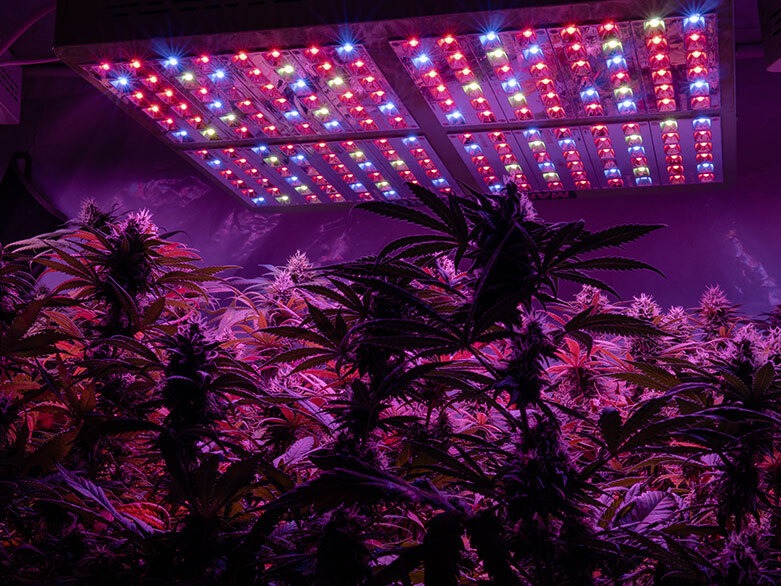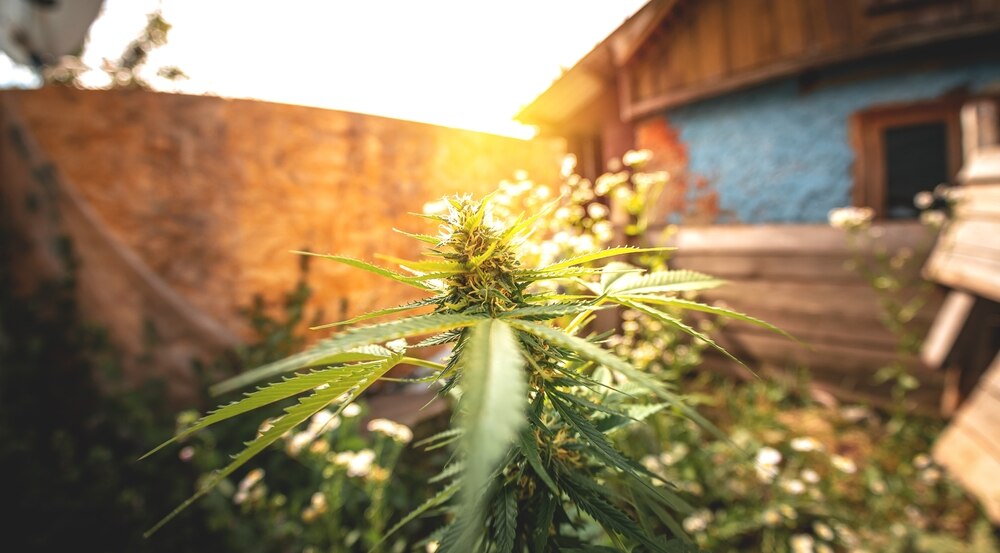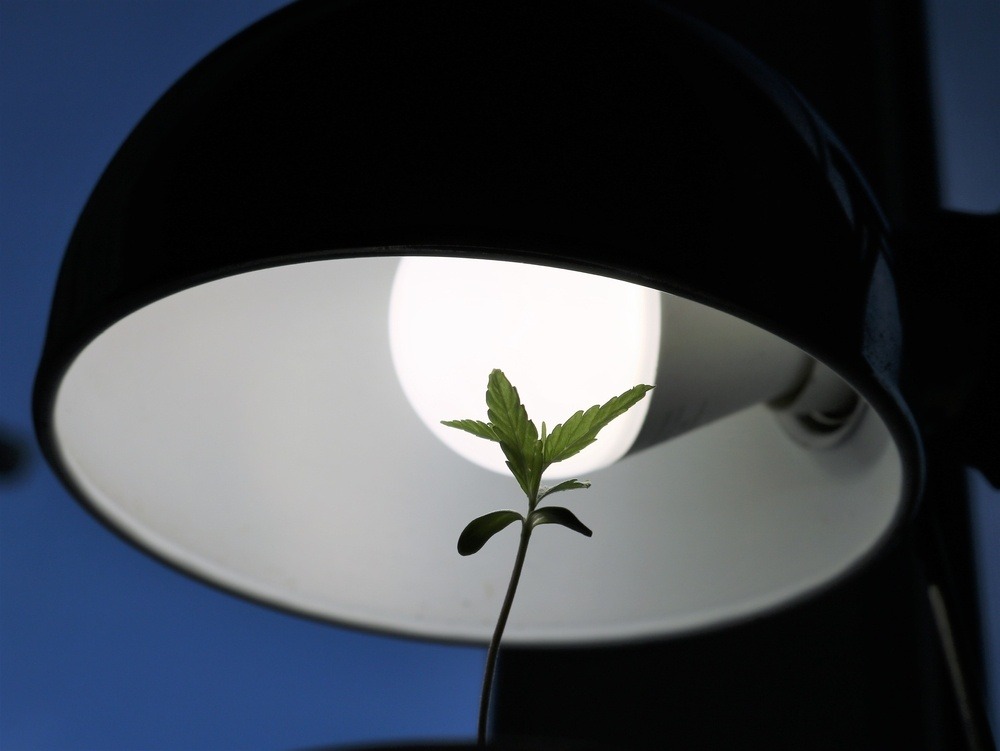
Best light schedule for growing autoflowers
The one glaring difference between autoflowers and regular photoperiod cannabis plants, is the need or lack thereof, of light schedules. As you may know, photoperiod plants require specific light schedules to begin flowering. Autoflowers, bred with cannabis ruderalis genetics, do not rely on light schedules to begin blooming. This benefit of autoflowering varieties is why so many beginner growers turn to these genetics, for ease of growth.
But, that doesn’t mean you won’t need a light schedule for autoflower plants. Some schedules will promote more optimal growth than others. So it’s key to understand autoflower light schedules in general. Especially, if you’re seeking to maximize your yields. Here we’ve put together the ultimate guide to light schedules for autoflowers. With this information, you can better decide which works best for your crop or operation.
Why do autoflowers need different light cycles?
Autoflowers grow differently than regular photoperiod plants, due to the cross-breeding of strains with ruderalis genetics. This lesser-known species is known for growing wild, and flowers without strict schedules of dark and light. Hence, their name and being ‘automatic’ in nature for growth. Like being on autopilot, autoflowering genetics switch from vegetation to flowering based on their age. Rather than relying on ratios of light to dark, like photoperiod plants.
| Light Cycle | Pros | Cons |
|---|---|---|
| 18/6 | Balanced growth with rest and light absorption. Reduces stress and promotes healthier development. Ideal for energy savings while maintaining strong yields. | Slightly slower growth rate compared to 20/4 or 24/0 due to less light exposure. |
| 20/4 | Faster growth due to increased light exposure. Can lead to higher yields in some strains. | Higher energy consumption. Shorter dark period may stress some plants, reducing overall health. |
| 24/0 | Maximizes growth rate by providing continuous light. Ideal for the fastest possible vegetative growth. | No rest period for plants, which can lead to stress and potential health issues. Highest energy consumption. |
What are the different autoflowering light schedules?
Similar to other factors in growing, there’s much debate amongst growers on the best autoflower light schedules. While some stick to 24-hour light cycles, claiming autoflowers produce bigger yields without darkness…others think differently. The thought with using light schedules for autoflowers, is it gives the plant time to rest. Many growers believe rest helps plants grow healthier and therefore better. Without much proof on the topic, we set out to explore the most common autoflowering light cycles. From real-time experience of growers, here’s a breakdown of light schedules for autoflowers, you can choose to use.
24 Hour Light Schedule
The thought behind the 24-hour light schedule comes from the origins of the ruderalis species. The ruderalis species primarily comes from the northern parts of Russia. In this area, 24 hour sunlight is common. Leading many to believe that autoflowering varieties can thrive with zero periods of darkness. For growers, there’s a few pro’s and con’s to a 24-hour light schedule for autoflowers. Including –
Pro’s
- Less work or equipment – With 24 hours of light, you won’t need to manually shut off lights every day. Or, buy extra equipment like a timer to do so automatically.
- May maximize yields – The more light, the more energy right? Some growers claim this concept is true, and that 24 hours of light can potentially produce higher yields.
- Better for cold climates – If your growing area is susceptible to temperature drops, due to colder climates than keeping lights on for 24 hours can help.
- Can help fast flowering strains such as 45 day autoflowers achieve faster growth in a short time frame.
Con’s
- Increased electricity – Keeping your lights on 24/7 will obviously increase the amount of electricity used. When avoiding higher than normal electricity bills, 24 hour autoflower light schedules aren’t ideal.
18/6 Light Schedule
Some growers have settled on a compromise between standard 12/12 photoperiod light cycles, and 24-hours of light that autoflowers may be able to handle. This has produced the most commonly used light schedule for autoflowers, of 18/6. Or, 18 hours of light and 6 hours of darkness. This schedule, of course, has pro’s and con’s itself. Like the following factors to consider –
Pro’s
- Provides rest – Many growers are adamant on plant’s receiving ‘rest’ to produce maximized yields and results. Periods of darkness are typically recommended for all plants, to encourage healthy growth without stress.
- Less electricity – Even with just 6 hours of darkness, you can cut your electricity use (and costs) by 25%.
- Better for hotter climates – No matter your location, but especially in hotter climates – there’s typically a ‘hot’ part of the day. To control your temperatures during this time, shutting the lights off for a 6-hour period, can help.
Con’s
- Requires a timer – When using an 18/6 light schedule for autoflowers, additional equipment like a timer will be required. Or, else you’ll be stuck manually shutting lights off at a set schedule or time, daily.
What is the best autoflower light cycle?
The best light cycle for autoflowers is usually 18/6. This means your plants receive 18 hours of light and 6 hours of darkness each day. The 18/6 cycle supports optimal growth by allowing plenty of time to absorb light and also rest. The rest period is crucial as it helps the plants recover from any stress, promoting healthier development throughout their growth cycle. This balance allows your autoflowers to grow efficiently without being overwhelmed, leading to better yields and healthier plants. Another popular option is the 20/4 light schedule, while this does allow for four hours of darkness, the extra 2 hours of light each doesn’t really add to the yield that much, so we believe the best all around light cycle is 18/6.
Other Light Schedules to Consider
18/6 and 24 hour light schedules aren’t the only autoflower light schedules to consider. Again, like most factors in growing, you’ll find a groove that works best for you or your plants. Along with forming your own preferences by trial and error. Since autoflowering plants can technically take up to 24-hours of light, a wide range of light schedules can work. Beyond the two most common, other light schedule examples include 22/2, 20/4, 19/5, and 16/8. Basically, any dark period will produce the same pro’s as 18/6 with differing dark periods for your own personal growing benefit.
What about 12/12 Light Schedules?
12/12 is the standard light schedule for photoperiod plants, to trigger the flowering phase. So, it begs the question – does 12/12 work for autoflower light schedules too? Not exactly. 12 hours of darkness is typically too much for autoflowers that can thrive with double the amount. The lack of energy often stunts growth, and produces much smaller plants. Meaning, smaller yields, too.
The 12/12 schedule is not recommended for autoflowering plants in general. But that doesn’t mean it’s not possible if necessary. For instance, if you’re growing both photoperiod and autoflowering plants, in a compact area, then you might have to use the same periods of darkness. In this case, your autoflowering plants will still grow, just at lesser yields than with longer periods of light.
Is natural sunlight better than grow lights for autoflowers?

Sunlight is generally better than grow lights for cannabis plants. Natural sunlight offers the full spectrum of light that can’t be perfectly replicated by even the best grow lights. This natural spectrum helps plants grow faster and bigger providing the weather is good enough and there is enough direct light reaching the plant. While artificial lights provide great control over the light cycle and intensity, they usually require more energy and will increase costs.
If you have the option, allowing your autoflowers to soak up sunlight during the daytime can be beneficial. There’s no need to move them indoors after sunset unless you are trying to manipulate the light cycle deliberately for experimental purposes. Autoflowers are adaptable and will perform well outdoors with natural light cycles, even if daylight is only around 12 hours. This can extend the vegetative and flowering phases slightly, but it won’t negatively impact your yield or plant growth much.
Light spectrum also matters when growing autoflowers
Providing the right light spectrum at the right time is also important when growing cannabis. The light spectrum that plants need changes through the stages of an autoflowers life cycle. During vegetative growth, cannabis requires more of the blue spectrum which is what is emitted by Metal Halide (MH) bulbs or the blue settings on LED panels. This spectrum is replicates natural daylight outdoors during spring and summer, mimicking the high sun and its blue light.
For the flowering stage, High-Pressure Sodium (HPS) bulbs or the red settings on LED panels are best because they emit red wavelength that helps to promote bud production and mimics natural light during late summer and early autumn.
More and more growers are starting to use LEDs for indoor cannabis grows now, this is mainly because they are cheaper to run and are capable of changing their light spectrum simply by adjusting the settings. LEDs can be customized to emit specific light spectrums. They also much more energy-efficient, produce very little heat, and require less maintenance compared to HID lights, making them a more sustainable and cost-effective option in the long run.
What is the 6/2 autoflower light cycle?
The 6/2 light cycle for autoflowers consists of three daily sessions where the lights are on for six hours and off for two hours, repeating 3 times throughout the 24-hour day. Some people use this schedule because it provides regular intervals of rest, which might be able to help prevent stress. The frequent rests do also help to keep temperature and humidity down, so while it may not be suitable for everyone if you live somewhere very hot this might be a solution to avoid heat stress.
Can you leave the lights on for 24 hours with autoflowers?
Yes, you can leave the lights on for 24 hours with autoflowers and it might help you to maximize vegetative growth by providing non-stop energy to the plants.
However it can also cause stress by not giving your plants enough dark recovery time. Most growers prefer the 18-hour light cycle, arguing that the six hours of darkness provide a necessary recovery period that is crucial for healthy plants. If you’re not sure, why not try the 20/4 light cycle first and see how you go.
Can autoflowers grow under any type of light bulb?

Yes, autoflowers can grow under any type of light bulb, however, the weaker the bulb the smaller your plants will be. If you were to use an ordinary household lightbulb the plants would be tiny and might die from a lack of light. The weakest type of lightbulb worth attempting to grow autoflowers under is CFL or fluorescent bulbs – any weaker than this and it probably isn’t worth the effort.
The best types of light bulbs used for growing autoflowers are LED, HID (High-Intensity Discharge) like MH (Metal Halide) and HPS (High-Pressure Sodium), and CFL (Compact Fluorescent Light) bulbs.
- LEDs are highly efficient and can be customized to emit specific light spectra ideal for different growth stages. They also produce less heat and consume less energy, making them a popular choice for long-term savings and environmental control.
- HID bulbs (MH and HPS) have been traditional favorites for many growers due to their powerful light output. MH bulbs are great for vegetative growth, providing the blue light spectrum, while HPS bulbs are favored during the flowering stage for their red spectrum.
- CFLs are less intense than LEDs or HIDs but can be suitable for small setups or as supplementary lighting. They’re also easier on the budget and available in various spectrums.
Lighting up to Light Up
As you can see…like most practices in growing weed, it’s all about the personal preference or success of each individual grower, and crop. Deciding your light schedule for autoflowers will ultimately depend on your climate, electricity capabilities, and experience. If you’re just beginning to grow, use this information to best decide where to start. From there, you can easily adjust light schedules as you see fit along your growing journey.
2 Replies to “Best light schedule for growing autoflowers”
Leave a Reply
You must be logged in to post a comment.





Do Autoseeds need grow light or/and sunlight to grow, or can they grow under just a white light bulb ?